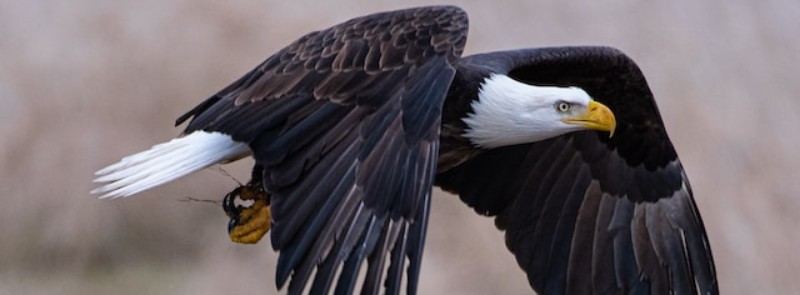
When It Occurs
Every January 10th
Timeline
Days Passed (1084)
# Hashtags
#NationalSaveTheEaglesDay #SaveTheBirdies
The significance of National Save The Eagles Day is evident from its name—it's a holiday dedicated to promoting awareness about eagles and shedding light on the challenges they confront in today's world.
This annual observance falls on January 10th and has been celebrated as a holiday since 2015. It offers an excellent opportunity for individuals to delve deeper into the lives of these majestic birds and actively support their cause. Bald eagles, being not just a symbol of the United States but also integral to the ecosystem, deserve our attention and advocacy on this day.
History and Significance: National Save The Eagles Day was established to recognize and celebrate the remarkable recovery of the Bald Eagle population, which faced significant decline during the mid-20th century due to habitat destruction, hunting, and the use of pesticides like DDT. The Endangered Species Act of 1973 and the banning of DDT in 1972 played crucial roles in the conservation efforts, leading to the recovery of eagle populations.
The day is significant as it serves as a reminder of the continued need for conservation efforts to protect eagles and their habitats. It also honors the success stories of conservation while emphasizing the importance of ongoing vigilance to prevent future declines.
Importance of Eagles:
- Ecological Role: Eagles are apex predators, meaning they are at the top of the food chain. They play a crucial role in maintaining the balance of ecosystems by controlling the population of prey species.
- Cultural Symbol: The Bald Eagle is a national symbol of the United States, representing freedom, strength, and resilience.
- Biodiversity Indicator: The health of eagle populations can indicate the overall health of the ecosystem. A thriving eagle population suggests a healthy environment.
Threats to Eagles:
- Habitat Loss: Urbanization, deforestation, and other forms of habitat destruction threaten eagle nesting and hunting grounds.
- Pollution: Pesticides, heavy metals, and other pollutants can contaminate water sources and prey, leading to health issues for eagles.
- Climate Change: Changes in climate can affect the availability of prey and suitable nesting sites.
- Human Disturbance: Human activities such as recreational boating, logging, and construction near nesting sites can disturb eagles and affect their breeding success.
Customs and Activities:
- Educational Programs: Participate in or organize educational programs and workshops to learn about eagles, their habitats, and conservation efforts.
- Bird Watching: Spend the day bird watching, visiting natural reserves, or participating in guided tours to observe eagles in their natural habitats.
- Support Conservation Organizations: Donate to or volunteer with organizations dedicated to the protection and conservation of eagles, such as the American Eagle Foundation, The Peregrine Fund, and the Audubon Society.
- Spread Awareness: Use social media and community platforms to share information about the importance of eagles and the need for their conservation using hashtags like #SaveTheEaglesDay.
- Adopt an Eagle: Symbolically adopt an eagle through conservation organizations to support their work in protecting eagle populations and habitats.
- Community Events: Participate in local events such as lectures, film screenings, and exhibitions focused on eagles and their conservation.
Interesting Facts About Eagles:
- Bald Eagles: Bald Eagles have a wingspan of up to 7.5 feet and can live up to 20-30 years in the wild.
- Golden Eagles: Golden Eagles are known for their powerful flight and can reach speeds of up to 200 mph during a dive.
- Eagle Nests: Eagles build some of the largest nests of any bird species, with nests reaching up to 13 feet deep and 8 feet wide.
- Monogamous Pairs: Many eagle species, including Bald Eagles, are monogamous and often mate for life.
Conclusion: National Save The Eagles Day is a vital observance that highlights the importance of protecting and conserving eagle populations and their habitats. By participating in educational activities, supporting conservation efforts, and spreading awareness, individuals can contribute to the ongoing success of eagle recovery programs and ensure that these magnificent birds continue to thrive. This day serves as a reminder of the power of collective action in wildlife conservation and the importance of preserving our natural heritage for future generations.


